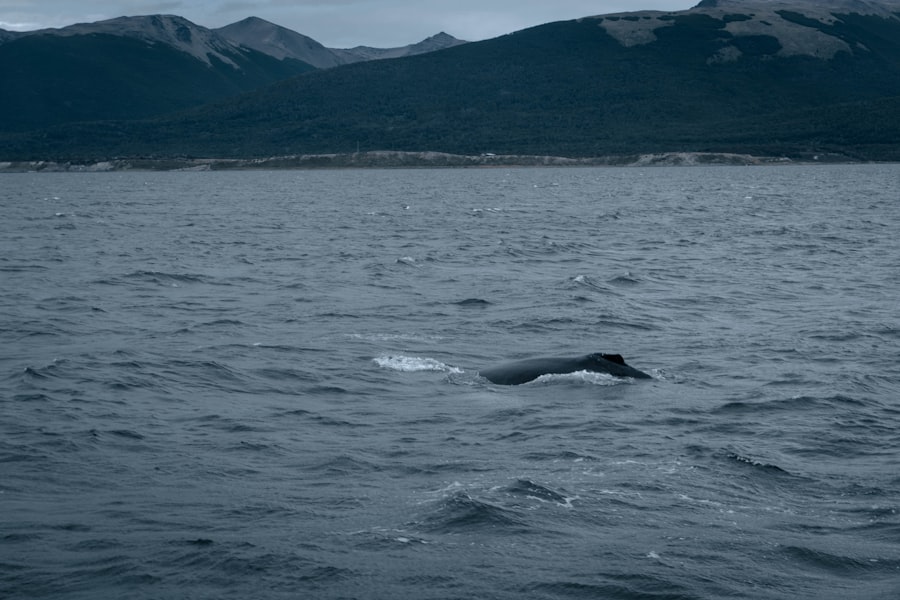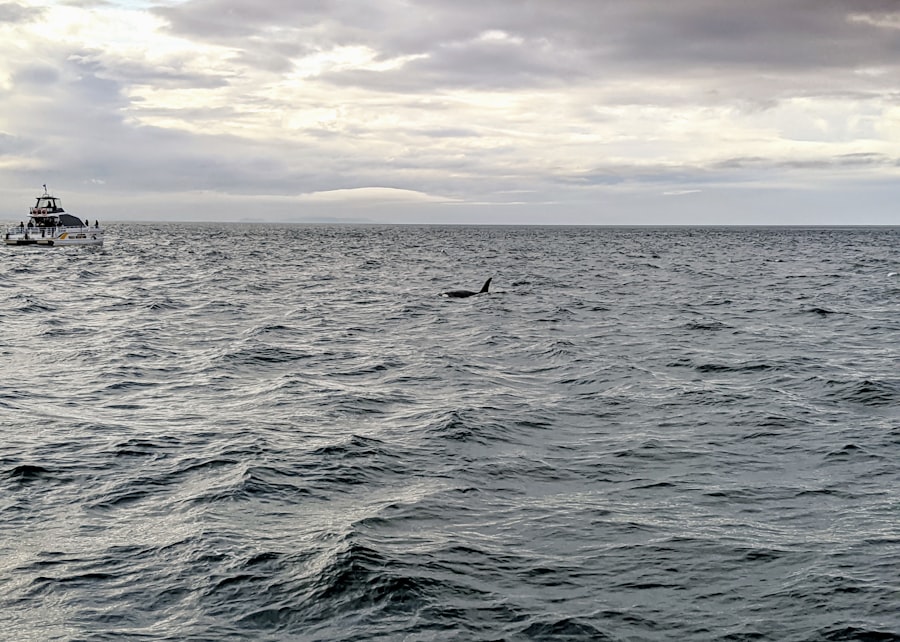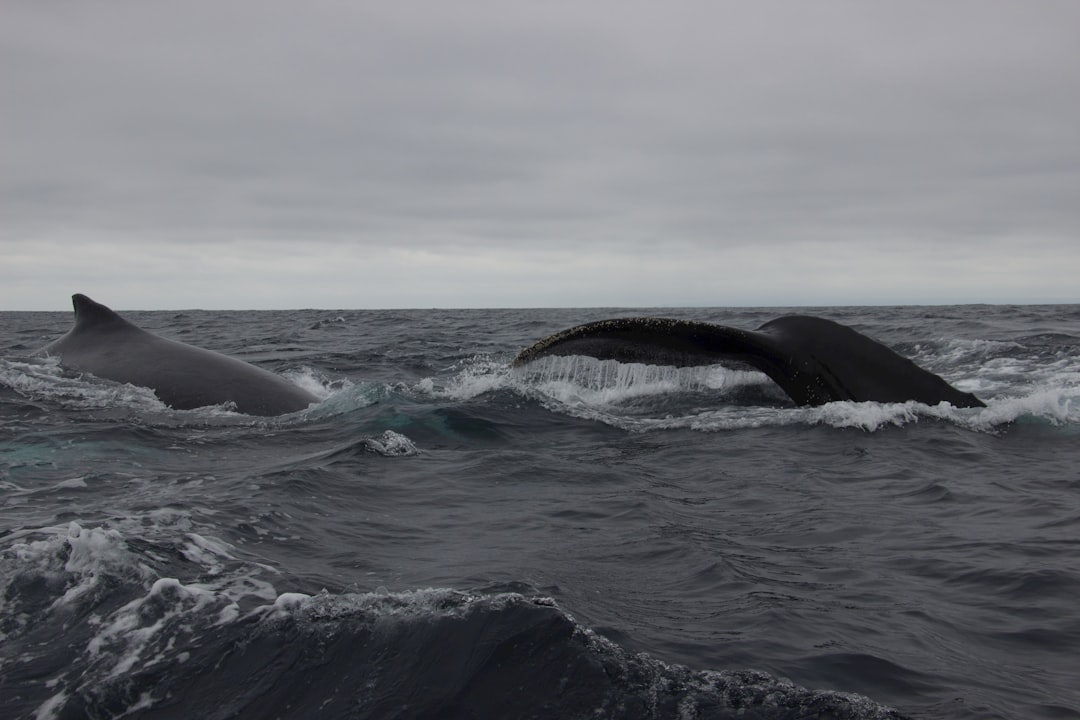The Drake Passage, a body of water situated between the southern tip of South America and Antarctica, is renowned for its tumultuous seas and rich marine biodiversity.
Named after the English explorer Sir Francis Drake, who navigated these waters in the late 16th century, the passage has long been a point of fascination for scientists, sailors, and adventurers alike.
Its unique geographical position not only influences weather patterns but also supports a diverse array of marine life, making it an essential area for ecological study. The Drake Passage is characterized by its unpredictable weather and strong currents, which can create challenging conditions for navigation. However, these same conditions contribute to the rich nutrient upwelling that sustains a vibrant ecosystem.
The confluence of the Atlantic and Pacific Oceans in this region leads to a dynamic environment where cold, nutrient-rich waters rise to the surface, fostering an abundance of phytoplankton. This primary production forms the foundation of the food web, supporting various marine species, including the majestic whales that traverse these waters. Understanding the complexities of the Drake Passage is crucial for appreciating its ecological significance and the myriad of life forms that depend on it.
Key Takeaways
- The Drake Passage is a crucial waterway connecting the Atlantic, Pacific, and Southern Oceans, known for its strong winds and currents.
- The Drake Passage is a vital feeding ground and migratory route for various whale species, making it a hotspot for whale watching and research.
- Researchers have been conducting extensive studies and observations to understand the behavior and population dynamics of whales in the Drake Passage.
- The area is home to a diverse range of whale species, including humpback, blue, fin, and minke whales, each playing a unique role in the ecosystem.
- Conservation efforts in the Drake Passage are essential to protect the whales and their habitat from environmental threats and human activities.
The Presence of Whales in the Drake Passage
Whales are among the most magnificent creatures that inhabit the Drake Passage, drawing attention from researchers and wildlife enthusiasts alike. The passage serves as a migratory route for several whale species, providing them with essential feeding and breeding grounds. The presence of these marine mammals is not only a testament to the health of the ecosystem but also highlights the importance of this region in their life cycles.
As they navigate through these waters, whales engage in behaviors that are critical for their survival, such as feeding on abundant krill and other small marine organisms. The diversity of whale species found in the Drake Passage is remarkable. From the massive blue whale to the agile humpback whale, each species plays a unique role in the marine environment.
Their presence is often indicative of the overall health of the oceanic ecosystem, as they rely on a balanced food web to thrive. Observing these majestic animals in their natural habitat offers valuable insights into their behaviors and interactions with other marine life, further emphasizing the need for ongoing research and conservation efforts in this vital area.
Research and Observations

Scientific research in the Drake Passage has been instrumental in enhancing understanding of whale populations and their behaviors. Researchers employ various methods, including aerial surveys, acoustic monitoring, and tagging technologies, to gather data on whale movements and population dynamics. These studies provide critical information about migration patterns, feeding habits, and social structures within different species.
By analyzing this data, scientists can better assess the health of whale populations and identify potential threats they may face in their environment. Observations made in the Drake Passage have revealed fascinating insights into whale behavior. For instance, researchers have documented complex social interactions among humpback whales during feeding and breeding seasons.
These observations highlight the importance of social structures within whale pods and how these dynamics can influence their survival. Additionally, studies have shown that certain species exhibit remarkable adaptability to changing environmental conditions, showcasing their resilience in the face of challenges such as climate change and human activity.
Whale Species Found in the Drake Passage
| Whale Species | Population | Conservation Status |
|---|---|---|
| Humpback Whale | 60,000 | Least Concern |
| Minke Whale | Unknown | Least Concern |
| Blue Whale | 10,000-25,000 | Endangered |
| Orca (Killer Whale) | Unknown | Data Deficient |
The Drake Passage is home to a variety of whale species, each contributing to the region’s ecological tapestry. Among the most notable are the blue whale, fin whale, humpback whale, and orca. The blue whale, known as the largest animal on Earth, can often be spotted during its migratory journey through these waters.
Its immense size and distinctive blue-gray coloration make it a breathtaking sight for those fortunate enough to witness it. Fin whales, characterized by their sleek bodies and impressive speed, are also frequent visitors to the passage. Humpback whales are particularly well-known for their acrobatic displays and complex songs.
These whales migrate thousands of kilometers from their feeding grounds in nutrient-rich waters to warmer breeding areas. Their presence in the Drake Passage during certain times of the year provides researchers with opportunities to study their behaviors and interactions with other species. Orcas, or killer whales, are another prominent species found in these waters.
Known for their intelligence and social structures, orcas often hunt cooperatively, showcasing their sophisticated hunting techniques.
The Importance of the Drake Passage for Whales
The Drake Passage serves as a crucial habitat for whales due to its rich food sources and favorable environmental conditions. The nutrient upwelling that occurs in this region supports vast populations of krill and other small marine organisms that serve as primary food sources for many whale species. As whales migrate through these waters, they rely on this abundance to sustain themselves during long journeys between feeding and breeding grounds.
Moreover, the passage acts as a vital corridor for migratory routes between different oceanic regions. For many species, such as humpback whales and gray whales, navigating through the Drake Passage is essential for completing their life cycles. The availability of food resources during migration is critical for successful reproduction and calf rearing.
Thus, preserving the ecological integrity of the Drake Passage is paramount for ensuring the survival of these magnificent creatures.
Environmental Factors Affecting Whales in the Drake Passage

The environmental conditions within the Drake Passage are influenced by various factors that can significantly impact whale populations. Climate change poses one of the most pressing threats to marine ecosystems worldwide, including those in the Drake Passage. Rising ocean temperatures can alter food availability and distribution patterns, affecting whales’ ability to find adequate nourishment during migration.
Additionally, human activities such as shipping traffic and fishing can disrupt whale habitats and lead to increased competition for resources. Noise pollution from vessels can interfere with whales’ communication and navigation abilities, further complicating their survival in these waters. Understanding how these environmental factors interact is crucial for developing effective conservation strategies aimed at protecting whale populations in the Drake Passage.
Conservation Efforts in the Area
Recognizing the ecological significance of the Drake Passage has led to various conservation efforts aimed at protecting its marine life. International organizations and research institutions collaborate to monitor whale populations and assess their health through ongoing studies. These initiatives often involve public awareness campaigns to educate communities about the importance of preserving marine ecosystems.
Marine protected areas (MPAs) have also been established to safeguard critical habitats within the Drake Passage. These designated zones aim to limit human activities that could harm whale populations while promoting sustainable practices that benefit both marine life and local communities. By fostering collaboration among stakeholders, conservation efforts seek to ensure that future generations can continue to appreciate and study these magnificent creatures in their natural environment.
The Role of Whales in the Ecosystem of the Drake Passage
Whales play an integral role in maintaining the health of marine ecosystems within the Drake Passage. As apex predators, they help regulate prey populations, ensuring a balanced food web that supports diverse marine life. Their feeding habits contribute to nutrient cycling within the ocean; when whales dive deep to feed on krill or fish, they bring nutrients from deeper waters to the surface through their waste products.
Furthermore, whales serve as indicators of environmental health; changes in their populations can signal shifts in oceanic conditions or food availability. By studying these majestic creatures, scientists can gain valuable insights into broader ecological trends affecting marine environments. Thus, protecting whale populations is not only vital for their survival but also essential for preserving the overall health of the ecosystem within the Drake Passage.
Future Implications and Research Opportunities
The future implications for whale populations in the Drake Passage are closely tied to ongoing research efforts aimed at understanding their behaviors and habitats. As climate change continues to impact oceanic conditions, scientists must remain vigilant in monitoring how these changes affect whale migration patterns and food availability. Advancements in technology offer exciting opportunities for researchers to gather more comprehensive data on whale populations through satellite tracking and underwater acoustics.
Moreover, interdisciplinary collaborations between marine biologists, ecologists, and climate scientists will be crucial for developing effective conservation strategies that address both immediate threats and long-term challenges facing whales in this region. By fostering a holistic understanding of how various factors interact within marine ecosystems, researchers can better inform policy decisions aimed at protecting these magnificent creatures for generations to come.
The Significance of the Discovery
The ongoing discoveries related to whale populations in the Drake Passage underscore not only their ecological importance but also humanity’s responsibility toward preserving marine life. Each new finding contributes to a growing body of knowledge that highlights how interconnected all aspects of marine ecosystems are. Understanding how whales interact with their environment can lead to more effective conservation measures that benefit not just whales but also countless other species that share their habitat.
Furthermore, these discoveries inspire awe and appreciation for nature’s wonders while reminding society of its role as stewards of the planet’s resources. As researchers continue to unveil new insights into whale behavior and ecology within this unique region, they reinforce the notion that protecting marine environments is essential for sustaining biodiversity on Earth.
Conclusion and Reflections
In conclusion, the Drake Passage stands as a vital region for understanding whale populations and their ecological significance within marine ecosystems. The presence of diverse whale species highlights not only the richness of this area but also its importance as a migratory corridor that supports various life cycles. Ongoing research efforts shed light on how environmental factors influence these majestic creatures while emphasizing humanity’s responsibility toward conservation.
As society grapples with challenges posed by climate change and human activity, it becomes increasingly clear that protecting habitats like those found in the Drake Passage is paramount for ensuring future generations can experience these magnificent animals in their natural environment. Through continued research and collaborative conservation efforts, there remains hope for safeguarding both whales and their ecosystems against impending threats while fostering a deeper appreciation for our planet’s incredible biodiversity.
The Drake Passage, a body of water located between the southern tip of South America and Antarctica, is known for its rich marine biodiversity, including the presence of various whale species. For those interested in exploring more about the marine life in this region, a related article can be found on MyGeoQuest. This article delves into the unique environmental conditions of the Drake Passage and the diverse species that inhabit its waters. To learn more, you can visit the article by clicking on this link.
WATCH NOW! Drake Passage: Earth’s Deadliest Waters Revealed
FAQs
What is the Drake Passage?
The Drake Passage is the body of water between the southern tip of South America and the northern tip of the Antarctic Peninsula. It is known for its rough seas and strong winds.
Are there whales in the Drake Passage?
Yes, the Drake Passage is home to a variety of whale species, including humpback whales, minke whales, and orcas. These whales are often spotted by travelers on cruises through the area.
When is the best time to see whales in the Drake Passage?
The best time to see whales in the Drake Passage is during the austral summer, which runs from November to March. This is when the whales migrate to the area to feed in the nutrient-rich waters.
What is the significance of whales in the Drake Passage?
Whales play a crucial role in the ecosystem of the Drake Passage, as they are top predators and help maintain the balance of marine life in the region. They also contribute to the overall biodiversity and health of the area.
